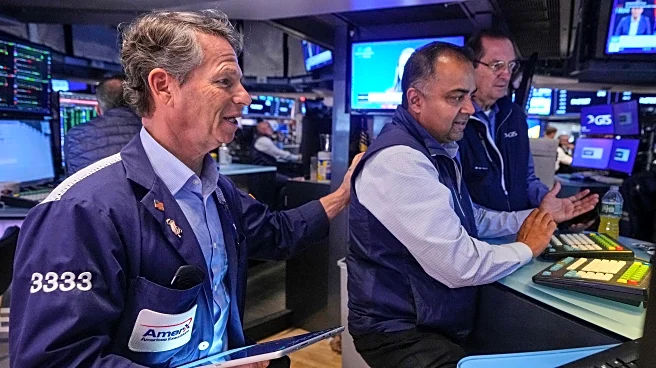What's Happening?
Gold prices have fallen for a second consecutive day as investors take profits following a prolonged rally. On Wednesday, gold futures decreased by $61.30, or 1.49%, to $4,053.10 per ounce. This decline
follows a significant sell-off on Tuesday, where gold lost 5.74% to close at $4,109.10, marking its worst performance since 2013. The sell-off comes after gold futures reached an intraday record of $4,398 per ounce on Monday. According to UBS, there is no macroeconomic or geopolitical event driving the pullback in gold prices this week. The decline is largely attributed to technical adjustments and profit-taking by speculative investors, as noted by UBS analysts led by Wayne Gordon. Despite the recent downturn, gold prices remain up more than 50% this year, driven by factors such as inflation, tariffs, threats to Federal Reserve independence, and political instability in the U.S.
Why It's Important?
The recent decline in gold prices is significant as it highlights the volatility and speculative nature of the precious metals market. Gold has been a popular investment amid economic uncertainty, serving as a hedge against inflation and currency fluctuations. The sell-off indicates a shift in investor sentiment, potentially impacting related industries such as gold mining and trading. Companies like Newmont and Barrick have already seen their stocks fall more than 4% in premarket trading. The broader implications for the U.S. economy include potential shifts in investment strategies and market dynamics, as investors reassess their positions in light of changing economic conditions.
What's Next?
The future trajectory of gold prices will likely depend on several factors, including ongoing economic conditions, investor sentiment, and geopolitical developments. Analysts suggest that the fundamentals driving gold's rise, such as inflation and political instability, are likely to persist, indicating that the metal may continue to be a valuable asset for investors. However, the recent profit-taking could lead to increased volatility in the short term. Market participants will be closely monitoring economic indicators and policy decisions that could influence gold prices and investor behavior.













